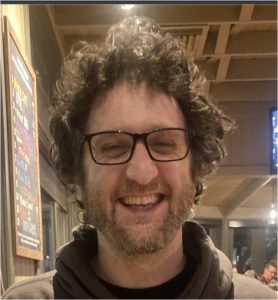Feature
Maine Was First to Ban Spreading PFAS-Contaminated Sludge on Farmland. Now Sludge Is Filling up Landfills.
Health•19 min read
Explainer
Why dairy milk became so entrenched in American children's diets.


Words by Seth Millstein
In America, it’s been widely believed for nearly a century that dairy milk is an essential part of a healthy childhood diet. From school lunch trays to billboards and digital and print ads, children and parents are bombarded with pro-dairy messaging daily. But dairy milk isn’t nearly as healthy as conventional wisdom would suggest — and in fact, the majority of the global population can’t properly digest lactose. This raises the question: how did dairy become so ubiquitous in children’s meals, despite its dubious benefits?
In America, milk has long been thought of as a central and irreplaceable component of a nutritious diet, especially for children. This has been true since at least 1946, when Congress required that milk be served in schools as part of the newly passed National School Lunch Act.
It remained true 20 years later, when the Special Milk Program, a program that provided free milk to schools that didn’t participate in the National School Lunch Program, became nationally available. And it was true yet again in 1980, when the U.S. government advised Americans to drink milk daily in the first edition of the Dietary Guidelines For Americans.
In the 1990s, relentless and ubiquitous advertising by the dairy lobby helped sustain milk’s positive public image. As part of a massive advertising blitz, the industry blanked airwaves and magazine pages with several different pro-milk slogans, one of which — ”Got Milk?” — was so wildly successful that it helped boost the career of future blockbuster director Michael Bay.
All of these initiatives have contributed to the perception that milk is an indispensable part of a healthy diet for growing children. But it isn’t.
Despite what many, many Americans were told growing up, milk is not essential nutrition, for children or adults.
To begin with, the majority of the human population has a reduced ability to digest lactose — around 65 percent, or roughly two out of three people. Lactose intolerance rates are higher among people of color: some research states that 80 percent of Indigenous and Black Americans, and over 90 percent of Asian Americans, (compared to only 15 percent of Caucasians) have trouble digesting lactose.
Whole milk in particular is high in saturated fat and LDL cholesterol, both of which contribute to the number one cause of death in America: heart disease.
While it’s true that milk contains a good amount of calcium, the calcium in milk — contrary to widely held beliefs — is not proven to reduce risk of bone fracture.
At this point, you may be wondering exactly how milk attained the vaunted status it enjoys in American culture. Here’s how.
Milk’s centrality in children’s meals stretches back to the 1940s, when Congress first established the National School Lunch Program (NSLP). The program, which is managed by the United States Department of Agriculture, provides free or low-cost meals to public school students, so long as the meals meet certain dietary requirements.
At the outset, one of those requirements was that every meal must include dairy milk; if any school served lunches without milk, they would lose federal reimbursement for their entire lunch program. This requirement has remained federal policy since the NSLP was launched. But why was it added in the first place?
There are a couple of reasons, but one of the biggest is that the NSLP actually has a dual purpose. One is to ensure that schoolchildren have regular access to nutritious meals, but the program was also created as a way for agricultural producers to offload excess commodities that they couldn’t sell.
“What [the] USDA would do is purchase foods that were produced in surplus, and essentially dump them on schools as a way of stabilizing what was, at the time, an unstable farming economy,” Chloë Waterman, a senior program manager for the nonprofit Friends of the Earth, told Sentient earlier this year. “And the program has not actually changed all that much since then.”
This wasn’t exactly a secret; the text of the law states that its purpose is “to safeguard the health and well-being of the Nation’s children,” but also to “encourage the domestic consumption of nutritious agricultural commodities and other food.” And that’s in line with the main purpose of the USDA: to support and promote American agricultural interests.
The milk requirement was added to the NSLP legislation not out of concern for school children’s health, but because after World War II, “the bottom was about to drop out of the dairy industry,” Milton Mills, M.D., critical care physician in Washington, D.C. and medical director for Switch4Good, told Sentient in 2022. By requiring schools to serve milk to students, Congress threw the dairy industry a lifeline.
“The National School Lunch Act made milk a mandatory offering,” Deborah Dubow Press, associate general counsel for the Physicians Committee for Responsible Medicine, tells Sentient. “That requirement locked in school kids as a captive market for milk.”
This requirement effectively normalized milk as a standard component of childrens’ diets (and in all likelihood, caused some kids to develop a taste for dairy milk at a young age).
Public schools do allow children to replace the dairy milk in their meal with a non-dairy replacement — but only if they declare a disability or bring in a written note from their doctor, or in some cases, their guardian. This is supremely ironic, given that lactose intolerance is more prevalent in the general population than lactose tolerance.
“Lactose intolerance is not a disability,” Press says. “It’s normal. It’s the most common condition. It’s a ‘disability’ only because our society doesn’t accommodate it, and it treats it as an irregularity.” Given that people of color are more likely to be lactose intolerant, Press calls the school policy surrounding dairy milk “the perfect microcosm of how systemic injustice works.”
Because the dairy requirement in school lunch is ensconced in federal law, Big Milk’s stronghold on school lunches in America will be difficult to break. There are some nascent efforts to do so, however: in 2023, several lawmakers introduced the Addressing Digestive Distress in Stomachs of Our Youth (ADD SOY) Act, which would require public schools to offer a non-dairy alternative to dairy milk at lunch.
The bill hasn’t passed, or even been voted on. But the fact that it was even introduced — by a bipartisan duo of lawmakers, no less — is a sign that, if nothing else, dairy milk is beginning to attract scrutiny and criticism that it’s otherwise avoided up to this point. This is also evidenced by the fact that younger Americans are increasingly swapping dairy milk for plant-based alternatives.
In the 1990s, when milk sales were in decline, the dairy industry debuted a new advertising slogan: “Got Milk?” The phrase was plastered on buildings, buses and billboards, and repeated ad nauseam in countless commercials and print ads.
Many of these ads would juxtapose the slogan with an image of a half-eaten food that, if partially consumed, might lead a person to desire milk, such as cookies or a peanut butter sandwich. Others featured celebrities like Dennis Rodman and Sarah Michelle Gellar (this was the 1990s, after all) proudly sporting milk mustaches.
“Got Milk?” is widely considered to be one of the most memorable advertising campaigns in American history. And it all came from a checkoff program, a little-known but massively influential type of government initiative aimed at supporting U.S. agriculture.
Checkoff programs are simple: the government takes a percentage cut from agricultural producers, and uses that money to fund public relations campaigns, advertisements and other initiatives aimed at convincing consumers to buy those products. For every 100 pounds of dairy milk that dairy producers sell, they have to pay 15 cents into federal dairy checkoff programs.
The “Got Milk?” campaign was funded by a dairy checkoff program in the 1990s, as were the “Beef: It’s What’s For Dinner” and “Pork: The Other White Meat” advertisements of the same era. Nowadays, checkoff programs look a bit different than they did 30 years ago, with many funds that would have been spent on TV commercials instead going to social media influencers and other online campaigns.
The success and effectiveness of checkoff programs, dairy in particular, can’t be understated. In 2011, dairy producers boasted that checkoff programs had effectively increased milk sales by 7 billion pounds of milk over the previous year, and according to Meatonomics author David Simon, every dollar spent on dairy and meat advertisements via a checkoff program boosts those commodities’ sales by eight dollars.
But these checkoff programs do more than just run ads. They also partner with major food chains, like Domino’s and McDonald’s, and research ways to get those companies’ products into school cafeterias. In practice, this usually involves finding ways to tweak the companies’ recipes such that their products meet the minimum standards that the government requires for school lunches.
“The checkoff programs partner with food companies to figure out how to funnel more cheese [and] more milk into the National School Lunch Program,” Press says.
Although this doesn’t relate to schools or children specifically, it wouldn’t be right to discuss dairy’s prevalence in American life without touching on the massive subsidies the industry receives from the federal government.
The USDA subsidizes many agricultural commodities, and dairy is no exception. These subsidies can take many forms, including direct payments, crop insurance rebates, price controls and more. The goal, as with most of what the USDA does, is to stabilize and support the agricultural industry — or, to put it differently, to make sure farmers don’t go out of business.
As of this writing, the USDA has no fewer than 10 dairy subsidy programs. All of them help to keep the price of dairy milk lower than it otherwise would be. According to one analysis, 71 percent of the dairy farmers’ revenues in 2015 were dependent on government subsidies.
The dairy industry has worked relentlessly for decades to convince the public that dairy milk is critical for a healthy diet, and the government has allocated countless resources over the decades to assisting this effort. As such, it’s hard to blame any parents or children for buying into the myth, as it’s been hammered home so consistently that few see any reason to question it.
But at the end of the day, dairy isn’t necessarily good for the majority of kids. The belief that dairy milk is the cornerstone of a nutritious meal for all American children is well past its expiration date.